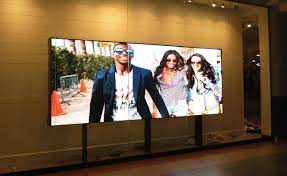
In the realm of modern technology, few innovations have captivated audiences and transformed landscapes quite like LED display screens. From bustling city centers to stadium arenas, these luminous panels have become sightled Transparent LED display, offering an unparalleled visual experience that transcends traditional mediums. As we delve into the intricate tapestry of LED display screens, we uncover not just a tool for entertainment and advertisement but a symbol of innovation and connectivity that is reshaping our world.
A Brief History
The journey of LED (Light Emitting Diode) technology dates back to the early 1960s when the first practical LED was developed by Nick Holonyak Jr. at General Electric. However, it wasn’t until the 1990s that LED display screens began to gain prominence. Initially, these screens were limited by resolution and color capabilities. Yet, advancements in technology propelled LED displays into a new era of clarity, brightness, and versatility.
Technological Advancements
One of the defining features of LED display screens is their ability to produce vibrant colors and high-definition imagery. Unlike traditional displays, which rely on backlighting and liquid crystal cells, LED screens emit light directly, resulting in superior contrast and brightness levels. This advancement has revolutionized industries such as advertising, entertainment, and information dissemination.
Moreover, the flexibility of LED technology has enabled the creation of curved, concave, and convex screens, allowing architects and designers to incorporate displays seamlessly into various structures and environments. Whether it’s wrapping around skyscrapers or adorning the interiors of shopping malls, LED screens have redefined the concept of visual communication.
Applications Across Industries
The versatility of LED display screens has spurred their adoption across a multitude of industries. In the realm of advertising, LED billboards have become iconic landmarks in urban landscapes, captivating audiences with dynamic content and targeted messaging. Similarly, in the entertainment sector, LED video walls have enhanced the immersive experience of concerts, sporting events, and theatrical productions.
Moreover, LED displays have found utility in transportation hubs, serving as informational signages in airports, train stations, and bus terminals. Their ability to convey real-time updates and wayfinding instructions has streamlined the passenger experience and improved overall efficiency.
Environmental Considerations
Despite their luminous brilliance, LED display screens are not without their environmental concerns. The manufacturing process of LEDs involves the use of various materials, some of which are non-renewable and potentially hazardous if not properly disposed of. Additionally, the energy consumption of large-scale LED installations raises questions about sustainability and carbon emissions.
However, advancements in energy-efficient LED technology, coupled with recycling initiatives and responsible disposal practices, are mitigating these concerns. Manufacturers are increasingly focusing on developing eco-friendly solutions, such as energy-efficient LEDs and modular designs that facilitate easier maintenance and upgradeability.
The Future Outlook
Looking ahead, the future of LED display screens appears promising, with ongoing innovations poised to further enhance their capabilities. From advancements in resolution and pixel density to the integration of augmented reality and interactive features, LED displays will continue to push the boundaries of visual communication.
Furthermore, the proliferation of Internet-of-Things (IoT) technology and smart connectivity will enable seamless integration between LED displays and other devices, creating immersive and personalized experiences for users.
In conclusion, LED display screens represent not just a technological marvel but a catalyst for transformation in how we perceive and interact with our surroundings. As these luminous panels continue to illuminate our world, their impact will be felt across industries, shaping the future of visual communication for generations to come.